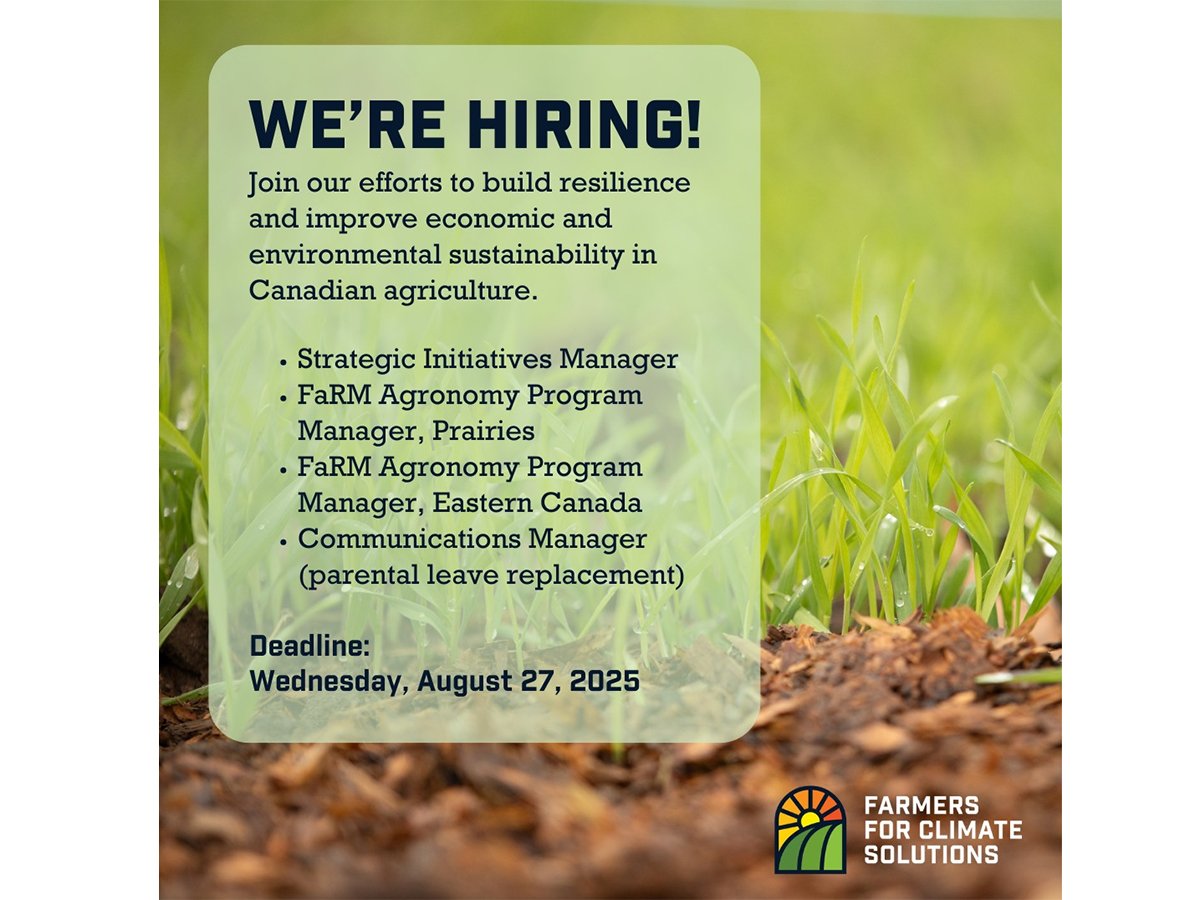If southern and central Alberta farmers see someone standing in their fields later this month, it might be the folks surveying for wheat midge and wheat stem sawfly.
Scott Meers, insect management specialist for Alberta Agriculture, said 240 fields will be soil sampled for wheat midge larval cocoons starting in mid-September. Surveyors will also check for signs of sawfly.
“We are going to survey in every municipality that grows wheat in central and southern Alberta,” he said.
Meers and his technician will be assisted by municipal fieldmen and staff from applied research groups.
Read Also

Environmental farm group has Ottawa’s attention
In 2021, Farmers for Climate Solutions published a report on how Canada should reduce emissions from agriculture. Not long after, the federal government implemented most of the recommendations in the report.
The insect surveys enable Meers to predict the levels of insect infestation for the next crop year.
He said farmers aren’t given advance notice of surveyors in their areas because it would be difficult and time consuming.
However, those taking samples follow sanitary protocols and are respectful when entering property.
“We try to be as respectful as we can,” said Meers, noting boots and tools are washed after each field.
Vehicles are parked on roads or field margins and the surveyors enter fields on foot.
About three-quarters of a litre of soil is collected from each field. It is later washed and the cocoons counted.
The process takes a few months, and Meers is able by January to issue projections for grasshoppers, wheat midge and sawfly.
He also prepares maps on potential infestations of seedpod weevil, pea leaf weevil and bertha armyworm.
Meers doesn’t predict survey outcomes, but said “conditions this year are probably favourable for both insects (wheat midge and wheat stem sawfly), so I wouldn’t be surprised to see an increase in both.”
Wheat midge seems to be expanding its range, he said.
“It’s important to note that once midge has established in an area, it is unlikely to ever completely disappear.”















